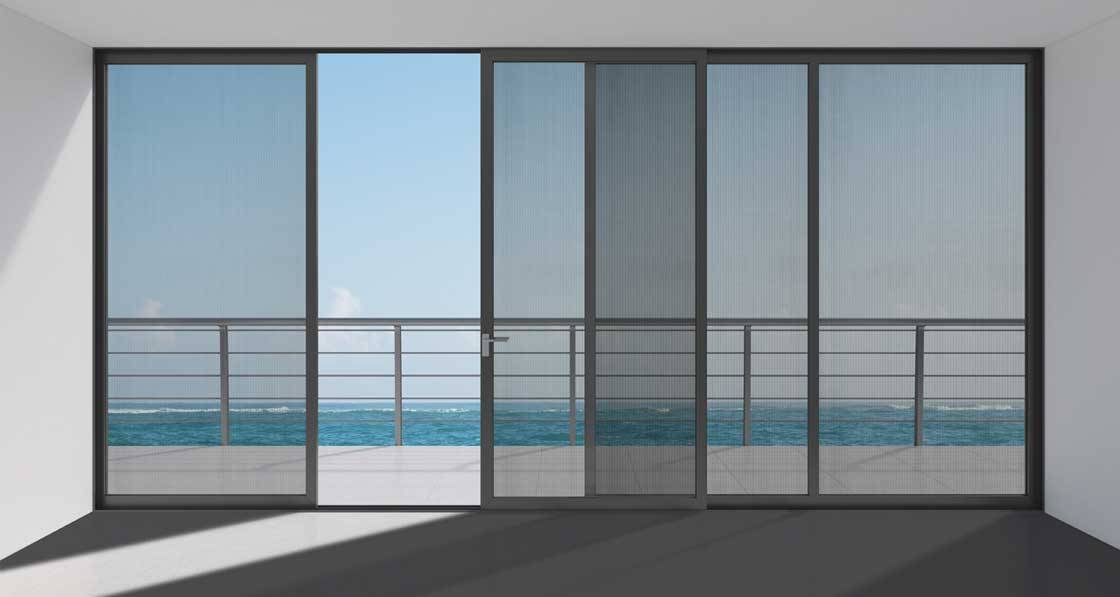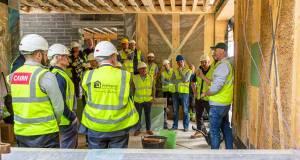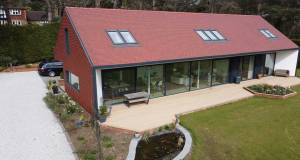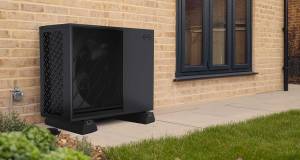
- Marketplace
- Posted
Why shading will be critical in the age of Covid
Over the coming years there will be growing demand for openable windows in our office buildings to help prevent virus transmission — which is why high-quality solar shading will be more important than ever, says Smartlouvre managing director Andrew Cooper.
This article was originally published in issue 35 of Passive House Plus magazine. Want immediate access to all back issues and exclusive extra content? Click here to subscribe for as little as €10, or click here to receive the next issue free of charge
The uptake of building certifications and accreditations that consider the wellbeing of occupants has proven that the building user’s comfort and contentment have been growing considerations for architects and building engineers in recent years.
For example, since its launch six years ago, the WELL Building Standard, which focuses on a building’s effect on health, is now being applied by 4,421 projects across 63 countries.
This includes both commercial and residential properties with the objective of advancing health, human experience and wellbeing through good design.
Without warning we find ourselves in a world completely turned around by a pandemic, where the wellbeing and safety of occupants has now become a key focus for all building owners and building service managers. It has been accepted that Covid-19 will not be eradicated anytime soon. It is changing the way we design the workplaces of the future.
Architects are currently altering building plans to accommodate CIBSE guidelines for increasing ventilation and introducing room cooling strategies that don’t rely on recirculating air conditioning systems.
At the same time, building owners and service managers of existing buildings are seeking ways in which to upgrade and retrofit to ensure that the risk of virus transmission is limited, whilst trying to provide occupant comfort and manage the risk of overheating.
With much of the world’s population working from home and for much of it ‘locked down’, we have been made very aware of the impact our homes have on our wellbeing. We have improved our homes and gardens, for the benefit of our physical and mental health. We have enjoyed the space, the safety, and the comfort of the homes we have created to our own personalised needs and wants.
This autumn, many of the world’s population face returning to the workplace after months at home, to spend nine-to-five in a building where our needs are not ‘personally’ met. Workplaces that may previously have provided comfort and familiarity are now changed by the pandemic.
Screens and other safety precautions have been introduced and soft furnishings removed or replaced so that we have only stark, wipe-clean surfaces to protect us from the risk of virus transmission. The visible changes to the workplace are immediately apparent. But the invisible changes like the lack of air conditioning or reduced air flow, could have even greater impact on workplace comfort and wellbeing.
Since the outbreak of coronavirus, the ventilation strategy of all shared spaces needs review. CIBSE’s advice is to increase ventilation as much as possible, increasing the flow of outside air and preventing any pockets of stagnant air.
Workplaces that lack good air quality, natural lighting or temperature control have a huge impact on workers’ energy and remove any chance of creative thinking. More importantly, thermal comfort has a proven effect on our ability to make good decisions and even on taking risks with our safety. For example, people might not wear personal protective equipment properly in hot environments. As well as being a key option for limiting virus transmission, increasing air movement by introducing natural ventilation can also help to control thermal comfort. Furthermore, directing the fresh air upwards allows for displacement of hot indoor air that has risen to the ceiling, with cooler air from outside to further reduce the indoor temperature.
Wherever possible we need to increase the amount of indoor air that is replaced by outdoor air. Operable windows are all too often taken for granted in office buildings, and their importance overlooked.
Natural ventilation will play an important role in the future of our buildings, along with mechanical ventilation using fresh air, both for limiting the risk of virus transmission but also for reducing energy consumption, carbon emissions, and building running costs. However, with the benefits of open windows comes the need to manage heat and glare. Internal blind systems remove visibility out and a connection with the outside world, and only protect the room from a minimal amount of heat gain. External shading systems do work but are expensive to install and maintain as well as reducing the quantity and quality of daylight and vision out.
Smartlouvre’s MicroLouvre product, designed as a solar shading window screen, consists of a fine bronze allow mesh, comprising 700 tiny ‘bris-soleil’ fins per metre of fabric, measuring only 1.5 mm in depth. It is installed on a frame external to any windows, allowing heat to accumulate on the surface of the metal and then dissipate to the outside before it reaches the window. The heat is blocked before it hits the glass, by a metal fabric, with micro fine louvres woven in to dissipate the sun’s heat and energy but not block natural daylight, natural ventilation or vision out.
The louvres are micro fine, and angled at a level to ensure optimum light in, and visibility out, whilst protecting building occupants from the heat, glare and even external viewing in. It’s known as angular selective technology. The 80% open area and angle of the louvres allow natural ventilation in a laminar flow with a distinct upward trend, directing the outdoor air towards the ceiling inside the building.
With its passive, angle selective, maintenance free technology, MicroLouvre supports all today’s energy saving, occupancy comfort and sustainable building performance requirements.
To find out more about MicroLouvre go to www.smartlouvre.com
Related items
-
 New Ejot profile cuts thermal bridging losses by 25mm insulation equivalent
New Ejot profile cuts thermal bridging losses by 25mm insulation equivalent -
 Build Homes Better updates Isoquick certification to tackle brick support challenge
Build Homes Better updates Isoquick certification to tackle brick support challenge -
 Ecological Building Systems expands UK and Irish straw panel construction with EcoCocon deal
Ecological Building Systems expands UK and Irish straw panel construction with EcoCocon deal -
 Focus on better buildings, not better spreadsheets
Focus on better buildings, not better spreadsheets -
 MBC offers total passive house envelope solutions
MBC offers total passive house envelope solutions -
 Grant’s Aerona R290: A next-gen heat pump designed for the Irish climate
Grant’s Aerona R290: A next-gen heat pump designed for the Irish climate

